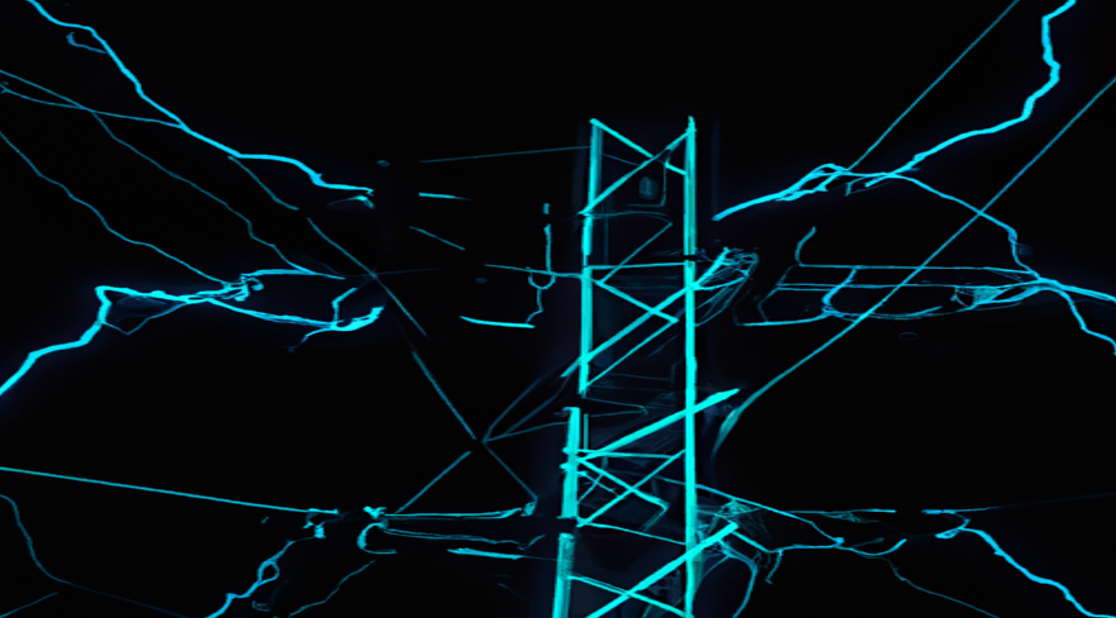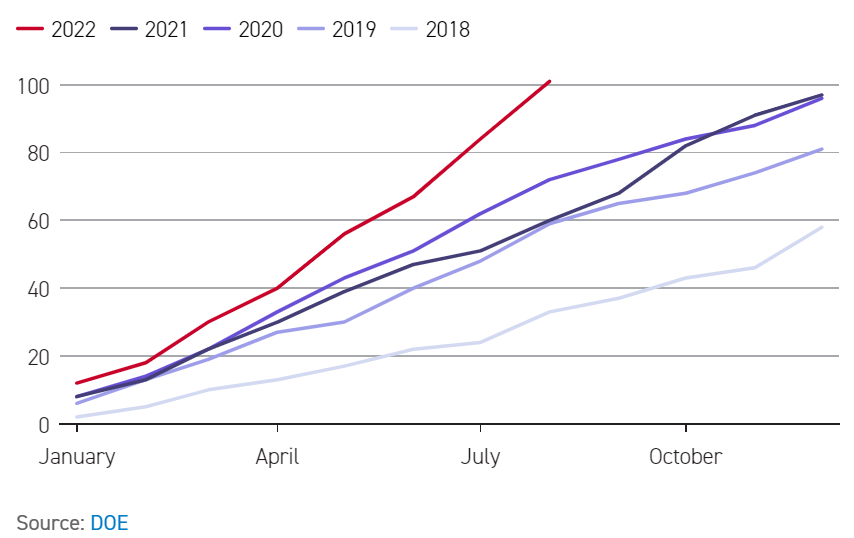Introduction
The physical attacks on power grids have been on the rise in recent years, with the number of incidents reaching a new peak in 2020. These attacks can have devastating consequences, ranging from power outages to financial losses. In this article, we will discuss the various types of physical attacks on power grids, their impacts, and the measures that can be taken to protect against them. We will also look at the current state of physical security for power grids and the challenges that remain in ensuring their safety.
How Physical Attacks on Power Grids are Increasing and What Can Be Done to Prevent Them
Physical attacks on power grids are becoming increasingly common, posing a serious threat to the security of energy infrastructure. These attacks can range from vandalism and theft of equipment to more sophisticated sabotage operations. In recent years, there have been a number of high-profile incidents, including the 2015 attack on the Ukrainian power grid, which left over 225,000 people without electricity.
The primary motivation behind these attacks is often financial gain, as criminals seek to steal valuable equipment or disrupt operations in order to extort money from utilities. However, there is also a growing concern that malicious actors may be using physical attacks to target critical infrastructure for political or ideological reasons.
In order to prevent physical attacks on power grids, it is essential that utilities take a proactive approach to security. This should include measures such as installing physical barriers around substations and other sensitive areas, as well as deploying security personnel to patrol these areas. Additionally, utilities should invest in advanced surveillance systems, such as CCTV cameras and motion sensors, to detect any suspicious activity.
It is also important for utilities to ensure that their personnel are adequately trained in security protocols. This includes educating staff on the importance of reporting any suspicious activity, as well as providing guidance on how to respond to a physical attack.
This chart shows the quantity of physical attacks on power grid installations within the United States alone.
Finally, utilities should work closely with law enforcement agencies to ensure that any physical attacks are investigated, and the perpetrators brought to justice. This will help to deter future attacks and send a strong message that such activities will not be tolerated.
In summary, physical attacks on power grids are becoming increasingly common and pose a serious threat to energy infrastructure. To prevent these attacks, utilities must take a proactive approach to security, investing in physical barriers, surveillance systems, and personnel training. They should also work closely with law enforcement to ensure that any attacks are investigated, and the perpetrators brought to justice.
The Impact of Physical Attacks on Power Grids and How to Mitigate the Risk
Power grids are essential for the functioning of modern society, providing electricity to homes, businesses, and other facilities. Unfortunately, physical attacks on power grids are becoming increasingly common, posing a serious threat to the security and reliability of the grid. This article will discuss the impact of physical attacks on power grids and how to mitigate the risk.
Physical attacks on power grids can have a devastating impact on the grid’s reliability and security. Such attacks can cause power outages, which can lead to economic losses, disruption of essential services, and even loss of life. In addition, physical attacks can also lead to the theft of valuable equipment, such as transformers and other components, which can be used to create weapons or to disrupt the grid.
Fortunately, there are steps that can be taken to mitigate the risk of physical attacks on power grids. One of the most effective measures is to increase physical security at power grid facilities. This can include installing security cameras, motion sensors, and other security measures. Additionally, it is important to ensure that all personnel have the necessary training and resources to respond quickly and effectively to any security threats.
Another important measure is to ensure that all power grid components are regularly inspected and maintained. This can help to identify any potential weaknesses in the system that could be exploited by attackers. Additionally, it is important to ensure that all personnel are aware of the importance of reporting any suspicious activity or potential threats.
Finally, it is important to ensure that all personnel are aware of the importance of cybersecurity. Cyberattacks can be used to gain access to power grid systems, allowing attackers to cause significant disruption. It is therefore essential to ensure that all personnel are aware of the importance of cybersecurity and are trained in how to respond to any potential cyber threats.
In conclusion, physical attacks on power grids can have a devastating impact on the grid’s reliability and security. Fortunately, there are steps that can be taken to mitigate the risk of physical attacks on power grids. These steps include increasing physical security, regularly inspecting and maintaining power grid components, and ensuring that all personnel are aware of the importance of cybersecurity. By taking these steps, it is possible to reduce the risk of physical attacks on power grids and ensure the continued reliability and security of the grid.
Exploring the Causes of the Surge in Physical Attacks on Power Grids and What Can Be Done to Stop Them
The surge in physical attacks on power grids is a growing concern for many countries around the world. These attacks can cause significant disruption to power supplies, leading to economic losses and even fatalities. It is therefore essential to understand the causes of these attacks and what can be done to stop them.
One of the primary causes of physical attacks on power grids is the lack of security measures in place. Many power grids are not adequately protected from intruders, making them vulnerable to attack. In some cases, the security measures that are in place are not sufficient to deter potential attackers. This lack of security can be attributed to a lack of resources, inadequate training, or a lack of understanding of the risks associated with power grids.
Another cause of physical attacks on power grids is the availability of weapons and explosives. In some cases, attackers may have access to weapons or explosives that can be used to cause significant damage to power grids. This can include explosives, firearms, or even improvised explosive devices. The availability of these weapons can make it easier for attackers to carry out their attacks.
Finally, the rise of extremist groups and terrorist organizations has also contributed to the increase in physical attacks on power grids. These groups often target power grids as a way to disrupt the functioning of a country or region. They may also use physical attacks as a way to gain publicity or to send a message to their enemies.
In order to stop physical attacks on power grids, it is essential to take steps to improve security measures. This can include increasing the number of security personnel, installing surveillance cameras, and using access control systems. It is also important to ensure that security personnel are adequately trained and that they understand the risks associated with power grids.
In addition, it is important to ensure that weapons and explosives are not easily accessible to potential attackers. This can include implementing strict regulations on the sale and possession of weapons and explosives, as well as increasing the penalties for those who are found to be in possession of such items.
Finally, it is essential to work with local communities to identify potential threats and to take steps to prevent attacks. This can include working with local law enforcement to identify potential attackers and to take steps to disrupt their activities. It is also important to work with local communities to raise awareness of the risks associated with power grids and to encourage people to report any suspicious activity.
By taking these steps, it is possible to reduce the number of physical attacks on power grids and to ensure that the power supply remains secure. This is essential for the safety and security of all citizens.
Conclusion
The physical attacks on power grids have surged to a new peak, and this is a cause for concern. It is essential that governments and power companies take steps to protect their grids from these attacks, as they can cause significant disruption and damage. This includes investing in better security measures, such as physical barriers, surveillance systems, and improved monitoring and response systems.
Physical security of industrial automation and control systems, has become an essential part of risk mitigation, as systems are normally installed and poorly maintained by many organizations. Access control is of primary importance to grant safety, security, and cybersecurity.
Additionally, it is important to educate the public on the risks of physical attacks on power grids and how to protect themselves. By taking these steps, we can help to reduce the risk of physical attacks on power grids and ensure that our energy supply remains secure.
Don't forget to subscribe to OT Connect Newsletter - The News That Matters.
Take advantage of the "Cybersecurity Awareness Month" exclusive discounts on training before October 31st.







Get Involved & Participate!
Comments